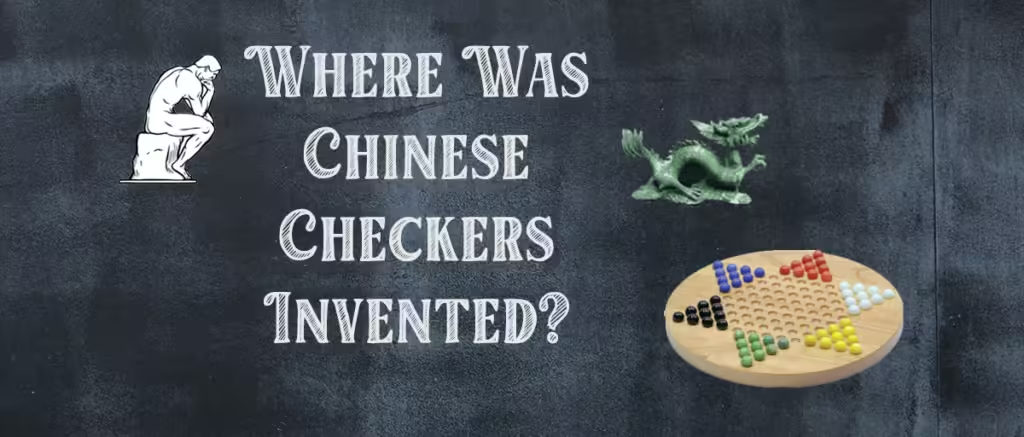Understanding the No-Move Situations
Before diving into strategies to overcome times when you can’t move in checkers, it’s crucial to grasp why these scenarios occur. A no-move situation arises when a player has no legal moves available during their turn, leading to an automatic loss as the opponent wins the game.
In checkers, pieces can only move diagonally on the board, and capturing an opponent’s piece is mandatory if possible. However, there are times when your pieces are blocked or your opponent’s pieces are strategically positioned to prevent you from making any legal moves. These no-move situations often result from a combination of skillful play by your opponent and strategic missteps on your part.
Table of Contents
Common Causes
- Overcrowding: Sometimes, your pieces can become overcrowded in a confined space, limiting their potential moves.
- Aggressive Play: Overly aggressive strategies can leave your pieces vulnerable and easily blocked by your opponent.
- Opponent’s Strategy: Your opponent may have skillfully maneuvered their pieces to create a blockade.
- Lack of Kinged Pieces: Not having kinged pieces can severely limit your mobility, especially in a late-game scenario.
Understanding these underlying causes can help you better prepare and avoid falling into a no-move trap.
Analyzing the Board
The initial step in avoiding a no-move situation is to meticulously analyze the board. This involves examining the position of your pieces as well as your opponent’s pieces. This analysis will help you identify any opportunities or weaknesses, enabling you to devise a plan to avoid a no-move situation.
Factors to Consider
- Piece Distribution: Assess the distribution of your pieces across the board. Are they concentrated in one area, or are they spread out? A concentrated distribution may limit your options, while a spread-out distribution may provide more opportunities.
- Kinged Pieces: If any of your pieces have been kinged (reached the opposite end of the board), they gain the ability to move both forward and backward. Utilize these kinged pieces and their unique abilities to avoid a no-move situation.
- Opponent’s Pieces: Pay close attention to the position and movement options of your opponent’s pieces. Identify any vulnerable pieces that you can potentially capture, opening up new possibilities for your moves.
- Potential Traps: Be wary of potential traps set by your opponent. Sometimes, what appears to be an easy capture can lead to a blocked position.
- Future Moves: Always think a few moves ahead. Predicting your opponent’s strategy can help you avoid getting trapped.
Detailed Analysis
- Initial Review: Start by scanning the board quickly to get a general sense of the game state.
- Focus Areas: Identify critical areas where your pieces are clustered or where the action is most intense.
- Opponent’s Plans: Try to deduce your opponent’s strategy based on their piece placement and recent moves.
- Escape Routes: Look for potential escape routes for your pieces that are currently blocked.
By thoroughly analyzing the board and considering factors such as piece distribution and kinged pieces, you can gain valuable insights into the current state of the game and devise a well-informed plan to avoid a no-move situation.
Strategies to Prevent a No-Move Situation
While being in a blocked position can be frustrating, several effective strategies can help you break free. Let’s explore some tactics that can turn the tide in your favor:
1. Sacrifice Strategy
Sometimes, sacrificing a lesser-valued piece can create an opening for your other pieces to move. Identify any sacrifices that may lead to favorable outcomes. By willingly sacrificing a piece, you may force your opponent into a position that benefits you. This strategy can disrupt your opponent’s plans and provide you with an opportunity to regain control of the game.
- Identify Target: Choose a piece that can be sacrificed without significantly weakening your position.
- Calculate Consequences: Ensure that the sacrifice will lead to a favorable position.
- Execute: Make the sacrifice and be ready to capitalize on the new opportunities it creates.
2. Forced Trades
If your opponent has greater mobility or superior piece placement, try to force trades that can create opportunities for you. By initiating captures and exchanges, you can alter the dynamics of the board and provide yourself with new possibilities. This strategy requires careful calculation and anticipation of your opponent’s moves, allowing you to gain an advantage and break free from the stalemate.
- Initiate Trades: Start captures that force your opponent to respond in a way that benefits you.
- Gain Positional Advantage: Use trades to improve your overall board position.
- Disrupt Opponent: Aim to disrupt your opponent’s plans and create new avenues for movement.
3. Luring Technique
Use the luring technique to tempt your opponent into making a move that benefits you. Create a situation where your opponent is enticed to capture one of your pieces, but doing so will open up a better position or a series of advantageous moves for you. By utilizing this strategy, you can manipulate your opponent’s actions and create openings for yourself, ultimately escaping the stalemate.
- Set Up Bait: Position a piece in a way that lures your opponent into making a capture.
- Plan the Follow-Up: Ensure that the capture leads to a favorable sequence of moves for you.
- Execute the Lure: Let your opponent take the bait and capitalize on the new opportunities.
4. Strategic Retreat
In certain cases, retreating strategically can help you reposition your pieces for a stronger offensive or defensive stance. By moving your pieces backward or sideways, you can potentially open up new avenues for movement and break the stalemate. This strategy requires careful planning and a thorough understanding of the board’s dynamics, allowing you to regroup and launch a counterattack.
- Identify Weak Points: Recognize areas where your position is weak and plan a strategic retreat.
- Reposition Pieces: Move your pieces to more advantageous positions.
- Prepare for Counterattack: Use the new positions to launch a stronger offensive or defensive move.
Conclusion
Encountering a stalemate in checkers can be a challenging scenario, but it doesn’t mean the game is over. By carefully analyzing the board and employing strategic tactics, you can navigate through this situation and regain control of the game. Remember to consider factors such as piece distribution, kinged pieces, and your opponent’s moves to devise an effective plan. Whether it’s sacrificing a piece, forcing trades, luring your opponent, or strategically retreating, you have various strategies at your disposal. So, the next time you find yourself unable to move in checkers, don’t give up; instead, use these strategies to turn the tide in your favor and enjoy the game to its fullest.
FAQ
What is a stalemate in checkers?
A stalemate in checkers occurs when a player has no legal moves available during their turn.
What factors should I consider when analyzing the board in a stalemate situation?
When analyzing the board in a stalemate situation, consider factors such as piece distribution, kinged pieces, and your opponent’s moves.
What is the sacrifice strategy in checkers?
The sacrifice strategy in checkers involves willingly sacrificing a lesser-valued piece to create an opening for your other pieces to move and regain control of the game.
How can I break free from a stalemate using the luring technique?
To break free from a stalemate using the luring technique, create a situation where your opponent is enticed to capture one of your pieces, but doing so will open up better positions or advantageous moves for you. This allows you to manipulate your opponent’s actions and create openings for yourself.
Affiliate Disclosure
Some of the links on Draughts.biz are affiliate links. This means that we may earn a small commission if you click through and make a purchase, at no additional cost to you. Please note that our product reviews and roundups are independent, and the affiliate relationships do not influence our content in any way.
Draughts.biz is a participant in the Amazon Services LLC Associates Program, an affiliate advertising program designed to provide a means for sites to earn advertising fees by advertising and linking to Amazon.com.
Amazon and the Amazon logo are trademarks of Amazon.com, Inc. or its affiliates.
Our passion for board games extends far beyond the checkers board. We’ll be your trusted companion, on a journey through the enchanting realms of not only checkers (or draughts) but also chess, backgammon, dominoes, mahjong, and a diverse array of other captivating board games.
Whether you’re in search of the ideal chess set, the best chess books, a chinese checkers set, a checkers set, or if you’re seeking the excitement of a thrilling game of mahjong solitaire, we’ll guide you along the way. In partnership with our affiliates, we bring you an extensive selection of board games and past times to explore and enjoy.
Dive into our extensive collection of guides and reviews, and unlock the joy and exhilaration that board games offer. From exquisitely crafted game pieces to the essential accessories that elevate your gaming experience, we’re here to guide you through it all with ease and delight.
Join us in celebrating the timeless allure and camaraderie that these games nurture, one post at a time!




